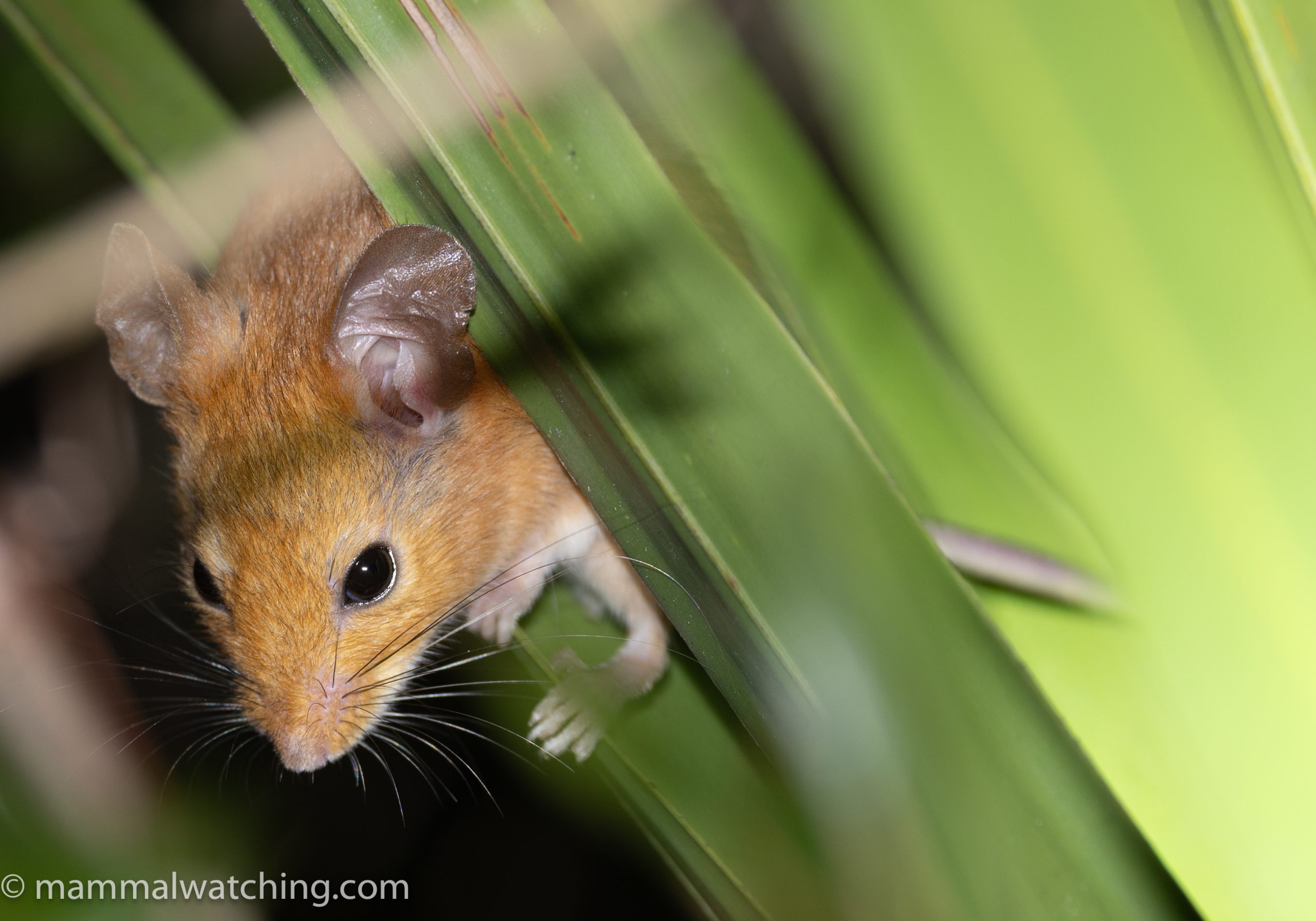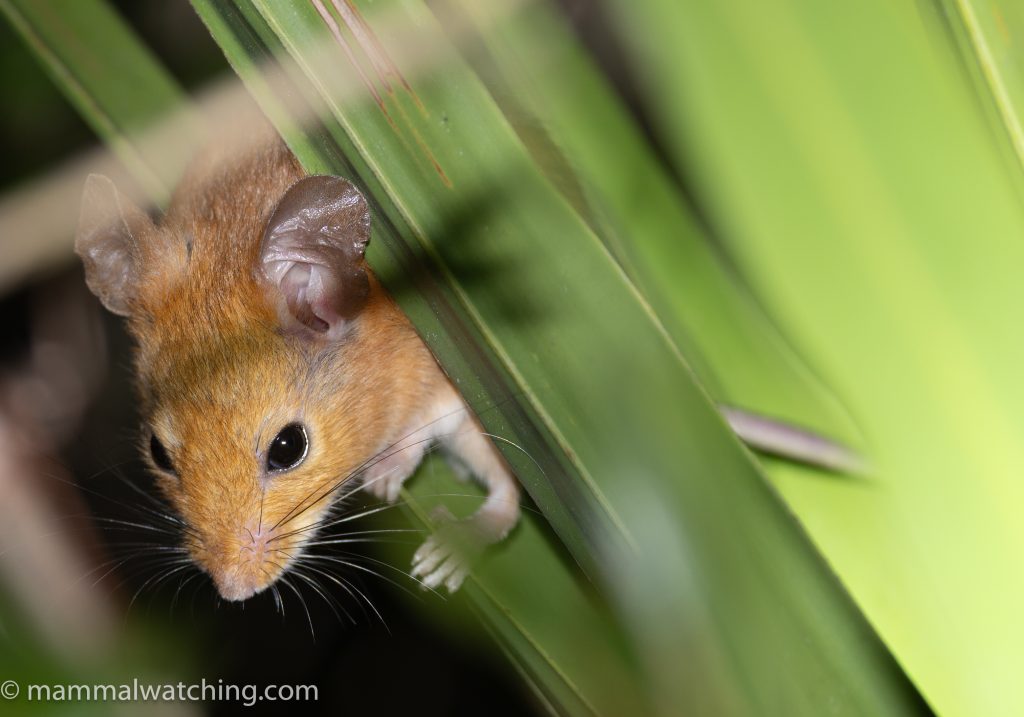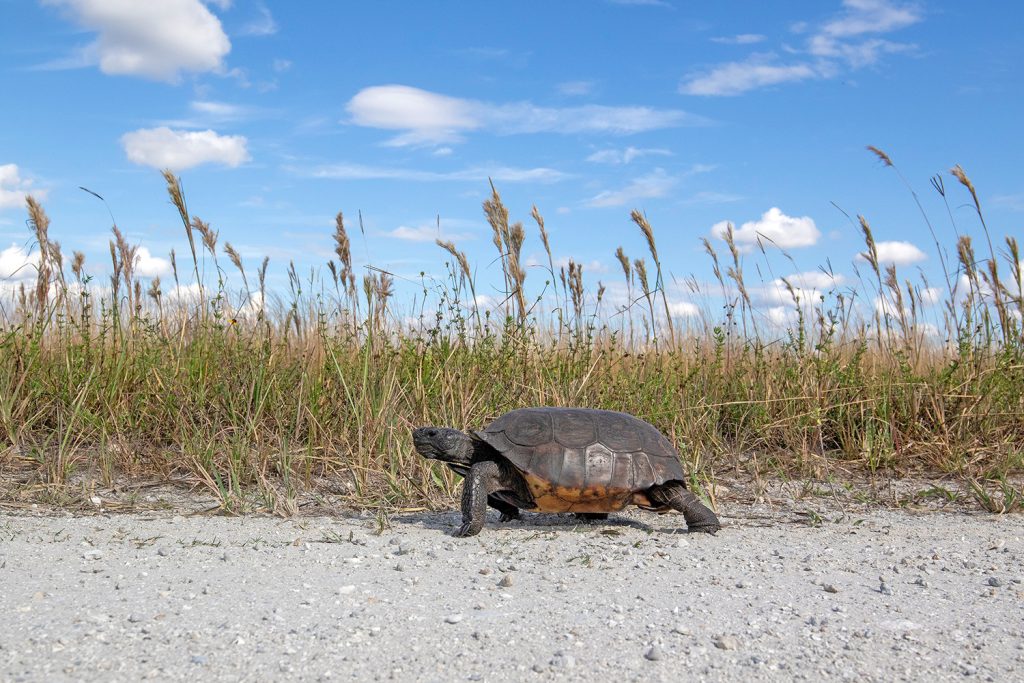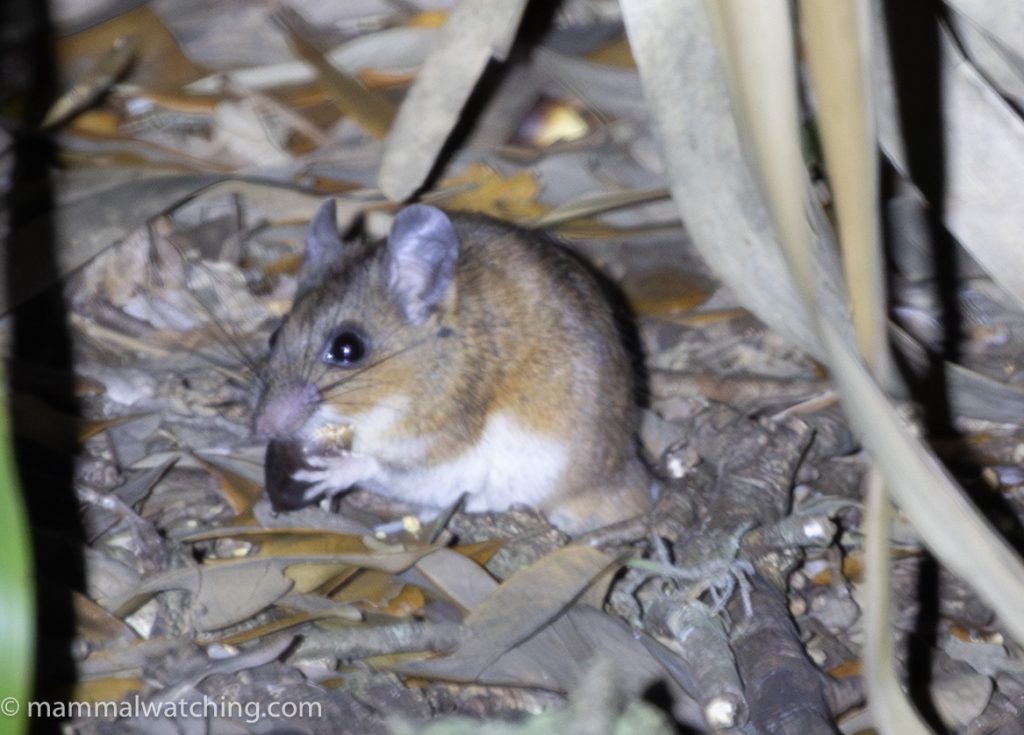
Florida weekend: Ocala National Forest and Three Lakes Wildlife Management Area
Here’s a brief post about an equally brief trip to Florida last weekend, where I met up with Todd Pusser to look for three species: Eastern Spotted Skunk; Florida Mouse and Southeast Pocket Gopher. We struck out, though we almost saw the gopher. But I did learn a little about where to look next time so thought a post might be useful.
Ocala National Forest

Golden Mouse (Ochrotomys nuttalli)
I flew into Orlando, met Todd and headed to Ocala national Forest, inspired by Venkat Sankar’s recent report. We stayed with Kenny Barnett, a naturalist friend of Todd’s.
Hunting season was starting and there was a lot of traffic. But there is no hunting at night so didn’t need to worry .. worry too much – this is Florida after all … about getting shot after dark. Venkat saw a lot of rodents here. We did not. But we did find a pretty Golden Mouse and what I assume was an Oldfield Mouse (it was dark grey and fairly short tailed) in the same area (both around here). We did not see any larger deer mice: Venkat saw Florida Mouse here and perhaps Cotton Mouse too. Though had did not see either I am not all that clear on how you can reliably tell them apart without looking at their footpads. We also saw a Black Bear with cubs, an Armadillo and mutiple Eastern Cottontails, Grey Squirrels and White-tailed Deer.
During the day we had found many fresh Southeastern Pocket Gopher burrows (at the side of the road here for example). We opened a few entrance tunnels up in the mid-morning, after getting politely interrogated by a ranger, and returned a few hours later to see if any gophers were active. All of the burrows were as we had left them. But when we came back that night one of the burrows had been sealed so we opened it up and waited. The gopher returned within 10 minutes to seal the hole but all I saw was a mound of dirt in front of the approaching rodent. I tried again and again saw just approaching dirt. I suspect if I had been a bit more strategic in how I opened the burrow, and how far down the burrow I could see, I might have seen the animal. I also got the impression that the gopher didn’t like my flashlight’s beam and I might have been better staking the hole out with a thermal scope. Two hours later, as we were driving home, we stopped in again and two more burrows had been sealed. I have searched for pocket gophers in the USA multiple times using this approach and tunnels are very often repaired in the daytime. Yet here all the maintenance work was done at night so I wonder whether this species is more nocturnal than the western gophers?
The Space Coast & Around
I have looked for Eastern Spotted Skunks several times in Florida without success. The east coast dune system is supposed to be good for this species, along with prairie habitat like Kissimmee Prairie and Three Lakes Wildlife Management Area. We tried looking in dunes at Flagler Beach. There was access to goo habitat here but we didn’t see a single mammal at night. Some Tamanend’s Bottlenose Dolphins the next morning were the only mammal. Further south then there are regular reports of skunks from Juno Beach and the Cape Canaveral National Seashore, which seems a good place to look: we would have tried if it hadn’t been closed because of the US government shutdown.
Three Lakes Wildlife Management Area

Gopher Toritoise in Three Lakes. Photo Todd Pusser.
As Venkat mentioned in his report, Three Lakes WMA has a particularly high density of skunks thanks to research from Todd’s buddy Stephen Harris hwho worked on them here a few years ago.
It was hunting season here too but we had no problem entering the park and were assured it was open 24/7 and that there was no hunting after dark so once again there was little chance of getting shot at night. There are still skunks in the area: we met hunters who had seen on one the road the evening before we were there. But the prairie vegetation, where the skunks like to be, is thick and we were not lucky. I think the odds would have risen considerably in our favour if we had visited after one of the park’s regular burns. Something to plan for next time.

Cotton Mouse, Peromyscus gossypinus, in a tree, Note the bicoloured tail.
We entered the reserve here and exited here, just an hour from Orlando. No skunks, but six hours of therrnalling produced several Armadillos, Virginia Opossums, Common Raccoons and multiple Eastern Cottontails and feral Pigs, as well as a Marsh Rice Rat and two Cotton Mice. On the basis of overall colouration and jizz this mouse looked more like a Florida Mouse to me … a greyish back with yellow cheeks and a yellow line along the sides which seem to be characteristic. But we can’t find any records of Florida Mice from Three Lakes WMA … but I live in hope!

Probably a Cotton Mouse, might be a Florida Mouse
A big thanks to Todd for all his pre-trip research, company and doing all the driving, and to Kenny Barnett for letting us stay with him in Ocala. I like to think we were able to infect Kenny with the mammalwatching bug! Sorry not sorry.
Trip List
Virginia Opossum (Didelphis virginiana)
Mexican Long-nosed Armadillo (Dasypus mexicanus)
Eastern Cottontail (Sylvilagus floridanus)
Eastern Gray Squirrel (Sciurus carolinensis)
Southeastern Pocket Gopher (Geomys pinetis) – signs only
Golden Mouse (Ochrotomys nuttalli)
Cotton Deermouse (Peromyscus gossypinus)
Oldfield Deermouse (P.polionotus)
Northeastern Marsh Rice Rat (Oryzomys palustris)
Northern Raccoon (Procyon lotor)
American Black Bear (Ursus americanus)
Tamanend’s Bottlenose Dolphin (Tursiops erebennus)
White-tailed Deer (Odocoileus virginianus)
Domestic Pig (Sus domesticus) – domestic
14 species
Post author


Leave a Reply
You must be logged in to post a comment.